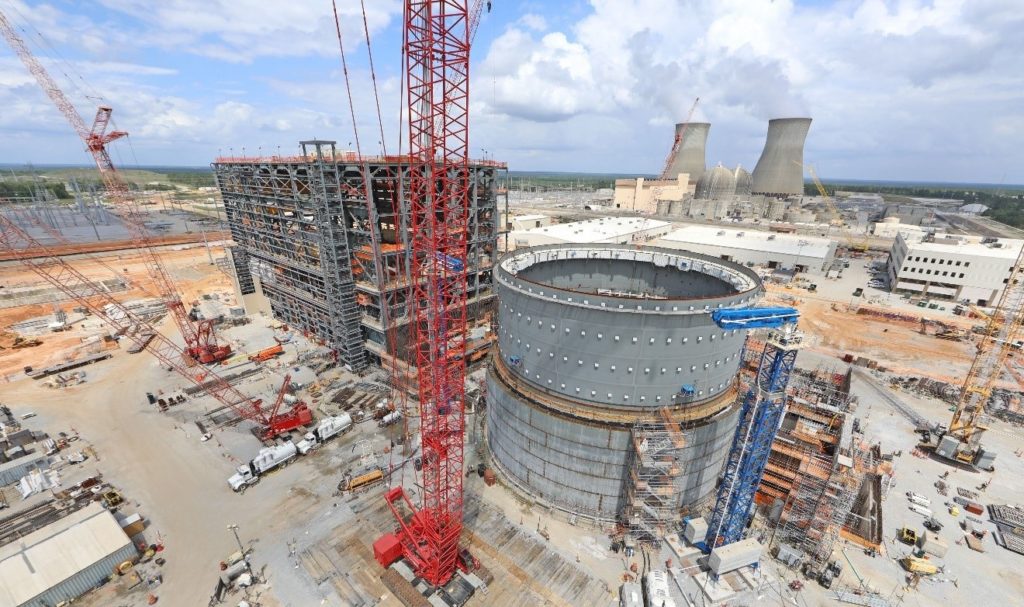Planning for nuclear project success – the false security of a fixed price contract
Nuclear plants can be the workhorse for many utilities, offering reliable and economic electricity into their grids. Operations across the globe have been excellent with the entire US fleet, representing a quarter of the world’s operating plants, consistently operating at 90% capacity factors or better. However, building new nuclear plants is more challenging especially in Europe and the US where there has been a long pause in new plant construction. This has meant the infrastructure and supply chain has had to be re-established for new plants to be built.
As a result, when it came time to restart nuclear construction, utilities who had not built plants for decades saw a path forward by passing on as much of the construction risk as possible to the plant vendors. The strategy is straight forward; get a fixed price EPC contract so that the vendor takes on all the project risk and responsibility. The belief is that these companies have developed the technology so they are obviously best suited to take this on. The only problem with this logic, is that it is wrong.
Just talk to Southern Company or SCANA in the US, or TVO in Finland. They negotiated hard and got their technology vendors to take on large fixed price contracts. The result, Olkiluoto 3 is 9 years late and counting; and Areva has been forced to restructure. And with Westinghouse in Chapter 11 bankruptcy, Southern has had to take over the main contractor role at Vogtle and the Summer project has been cancelled. Not quite the outcomes these owners were planning on. While there are a number of reasons these projects have struggled, it is not because of the technologies themselves. We have little doubt that once operating, these advanced designs will generate reliably for many years to come. And while some believe nuclear plants just can’t be built to cost and schedule, we know this is not the case as can be seen in countries like China and Korea where they have been successfully implementing large ongoing new build programs consisting of standardized designs for many years. Therefore, in this post we want to focus on some principles that owners should consider when structuring a project to effectively manage nuclear project risk and achieve project success.
Let’s start with some basic facts about nuclear projects. They are large, capital-intensive projects with relatively long project schedules. Once they are operating they have low and stable operating costs primarily due to the low cost of nuclear fuel. Therefore, to maintain the economics of a nuclear project – plants must be built to cost and schedule. And we all know, this often does not happen. Large projects (of all kinds) are renown for going over budget and over time.
Nuclear projects take an incredible amount of planning and effort to complete successfully. Success; this is the most important word not used nearly often enough in planning and executing a large nuclear project. It is easy to get so consumed when talking about risk with figuring out which party will pay when things go wrong, we forget the most important objective is to absolutely ensure that things go right.
One of the most important lessons learned from these recent difficult projects is that the project owners took too much comfort from placing a huge amount of risk on the contractor – and the contractors’ willingness to take on this risk was accepted as a proxy for both capability and confidence that the overall level of risk was manageable. The reality is that if you are an owner building a plant, there is one absolute truth – if it is your plant, then it is your risk. There is no way out of it. I can assure you that if the contractor fails, the owner fails. Always.
It is essential to recognize that managing this risk is the owner’s responsibility. And while this can be accomplished by transferring some risks to contractors and others to insurance – most of all, the owner needs to manage and mitigate this risk through its own strong project management.
How do you, the owner do this? First of all, build a strong internal project management team to control the project. If you don’t have enough experience, get it. Once you have a team in place here are a few key tips.
- Choose a design that has been built before. A standard deign will be lower in risk. First of a Kind (FOAK) risk is real. If it is not possible to avoid a new design, then plan to get the engineering completed before a final decision is made to proceed with the rest of the project and have a cost and schedule that take this higher level of uncertainty into account;
- Invest in your supply chain. Don’t select your major contractors based on reputation alone. Projects are built by people, not reputations. Make sure the best people are assigned to your project. Assume the contractors are not as good as you think they are and be prepared;
- Choose contract structures that transfer risk to your contractors sufficient to incentivize them to perform. Pushing too much risk and then driving your main contractors into bankruptcy serves no one; and
- Most of all, no matter the contract structure, there must be transparency through the contract because it is always your job as the owner to manage your project. It is in no one’s interest to allow the contractor to manage on his own and then watch him fail. It is only with a strong set of project metrics and efficient reporting that problems can be identified early and acted upon – by all parties – with an unwavering focus on project success.
Nuclear plants are extremely reliable, efficient, low carbon and cost-effective producers of electricity. As they are capital intensive, their economics depend upon successful project implementation. Therefore, once you take a decision to implement such a project always remember that success is your responsibility and this responsibility cannot be passed on to others. Keep that in mind when structuring your project and in all decisions you make – and you will be well on the road to achieving your goal – a successful nuclear project built to cost and schedule.






4 Comments
Joseph Talnagi · October 28, 2017 at 10:02 am
A good summary of the challenges we face, and perhaps of why it will be difficult to sell new nuclear projects to prospective customers. All of what has been discussed here represents effort that goes beyond that needed to build simpler power generators, things like SCGT and the like. Why should an owner go through the extra effort and cost to do the things listed here when they can get a turn-key gas plant of similar capacity at half the cost? That and downstream O&M costs for nuclear are surpassing those for gas-fired systems. Being a true believer in a technology doesn’t cut the mustard in today’s business model, where short-term profits and risk aversion dominate.
Two things may turn it around. One is to place a cost on the effluents (which are significant) of gas-fired units. Require the gas plants to meet the same emission standards as nuclear plants. The cost differential between nuclear and gas will be dramatically lower. The other is if we make de-carbonization a true national policy goal. The low-hanging fruit of steam electric plants will be the first sector to implement those goals. That will place a value on the (near) zero-emission product of nuclear plants. Up until recently the “free” market placed little or no value on that. Changing that imbalance will improve the standing of nuclear projects when matched against other generators.
Jim Little · October 30, 2017 at 3:49 pm
I agree with a lot of the points in this article.
One fallacy is that one can “transfer” risk. It just can’t be done. Fixed price contracts on large, complex contracts are just insurance policies that give a false sense of security.
The more appropriate approach is to recognize risk openly and work for a collaborative method between supplier and client to manage it. For large nuclear EPC projects, a target price, target schedule open-book contract is the most appropriate to put client and supplier on the same “side of the table”.
Complete a detailed risk analysis, (not a risk register!) , to model the conditions necessary for success and their assumptions. Perform sensitivity studies to determine the “shape” of the probability curve and what drives it.
Harmail Basi · November 3, 2017 at 7:29 am
Good job Milt on a well researched and informative review of new builds. Totally agree on all your major points. Are the Abu Dhabi KEPCO AP 1000 New builds in the success category as well?
Thanks for your dedication and commitment to building new nuclear plants, successfully.
Mark Lesinski · November 19, 2017 at 12:14 pm
Milt,
A great summary of a conundrum that is plaguing our industry. The only other big picture problem I have experienced repeatedly in our nuclear industry is Optimism Bias. “If I keep the initial ask low enough I can get approval and we will worry about increases later when we can’t live to a P0 schedule/cost.” Improperly risk informed estimates have damaged our reputation severely.
In any event, good blog.
Keep up the dialogue!
Mark
Comments are closed.